Skin Layers

How to Make a 3D Model of the Skin?
Found on the palms of the hands and soles of the feet, the thick skin has all five layers and sweat glands. This skin doesn't have hair follicles or sebaceous glands. On the other hand, thin skin has only four layers, with no stratum lucidum, and has sebaceous and sweat glands and hair follicles. Fig. 5.10 Skin: Thick and thin skin cross sections

Skin Functions, Layers, Cells, Color, and Structure
boils nevus (birthmark, mole, or "port wine stain") acne melanoma (skin cancer) keratosis (harmless skin growths) epidermoid cysts pressure ulcers (bedsores) Dermis
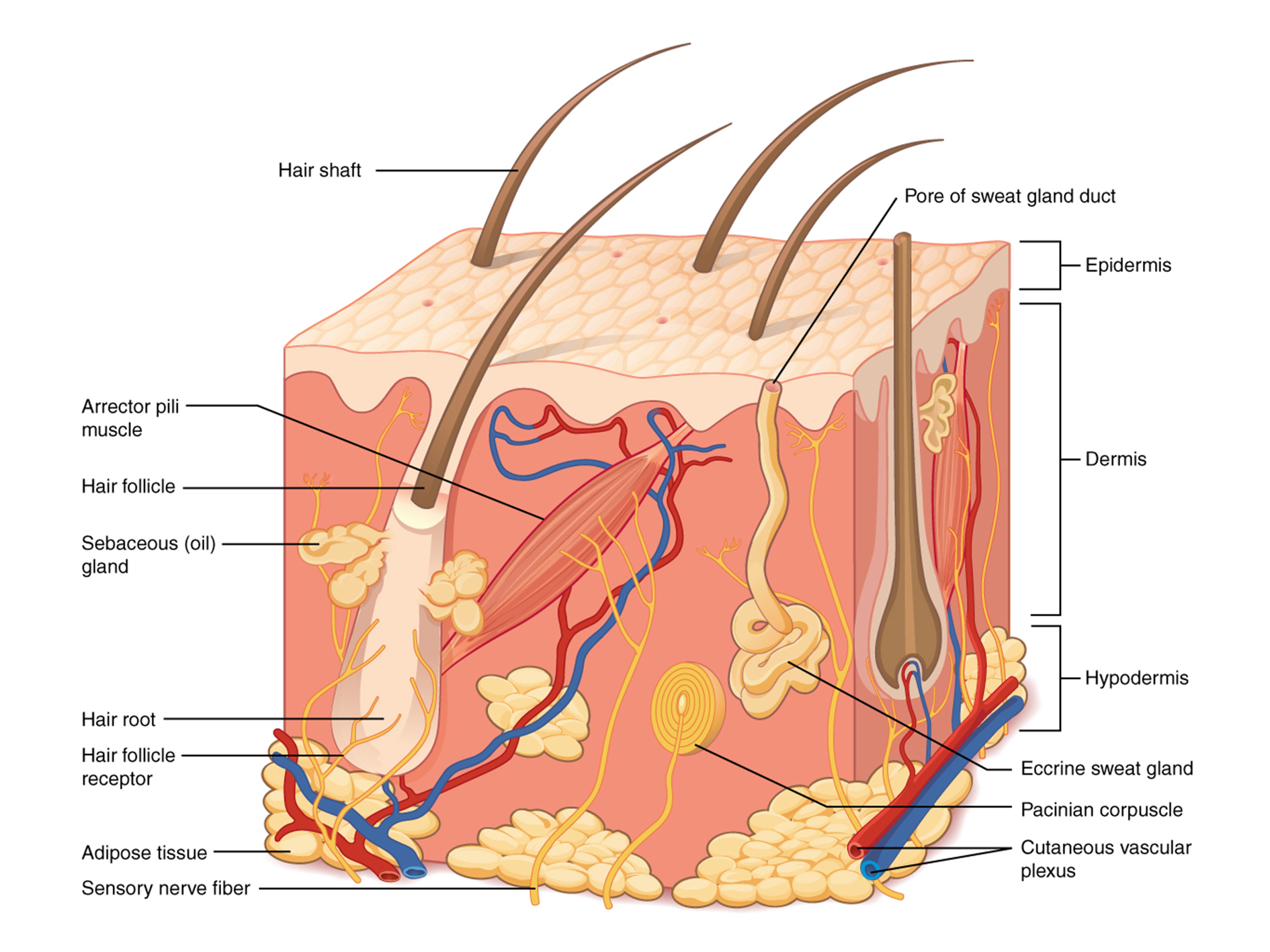
POSTECH University develops 3D bioprinting technique that grows human
Your integumentary system is your body's outer layer. It's made up of your skin, nails, hair and the glands and nerves on your skin. Your integumentary system acts as a physical barrier — protecting your body from bacteria, infection, injury and sunlight. It also helps regulate your body temperature and allows you to feel skin sensations.

skin layer model making(3D) diy science project DIY School
Figure 5.1.1 - Layers of Skin: The skin is composed of two main layers: the epidermis, made of closely packed epithelial cells, and the dermis, made of dense, irregular connective tissue that houses blood vessels, hair follicles, sweat glands, and other structures.

Skin layer diagram
A different type of skin mimetic model, Strat-M®, was designed and commercialized to mimic the SC and is composed of a synthetic membrane comprising multiple layers of different materials, as porous polyether sulfone and polyolefin, enclosed by a combination of lipids (ceramides, cholesterol, and FFA) and other components, forming a three.

Skin Layer Project Skin anatomy, Integumentary system, Integumentary
2.1 Morphology of human skin. The skin is a multi‐layered organ composed of many histological layers mainly the epidermis and dermis [] as shown in Fig. 1.It also includes some skin appendages in the horizontal direction such as sweat glands and hair follicles [].The epidermis is made up of keratinocyte (95% of cells), which is the principal cell forming 'brick and mortar' structure.

Skin Deep The Role of the Endocannabinoid System in Cutaneous
5 Altmetric Metrics Abstract The skin barrier is provided by the organized multi-layer structure of epidermal cells, which is dynamically maintained by a continuous supply of cells from the.
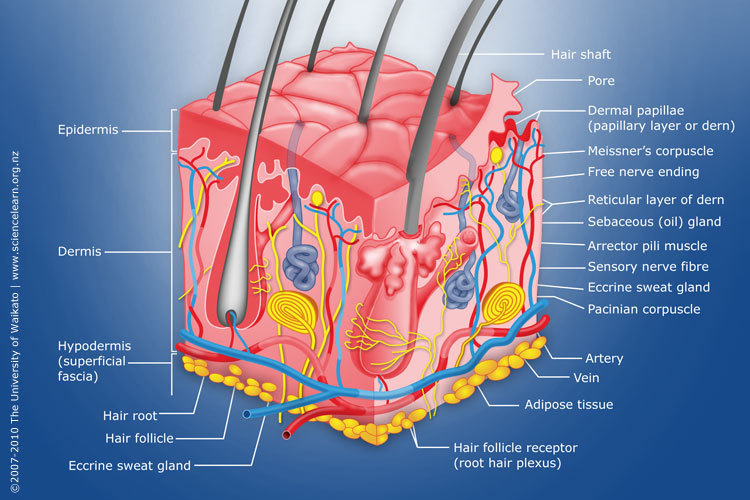
Diagram of human skin structure — Science Learning Hub
Figure 1. Layers of Skin. The skin is composed of two main layers: the epidermis, made of closely packed epithelial cells, and the dermis, made of dense, irregular connective tissue that houses blood vessels, hair follicles, sweat glands, and other structures.
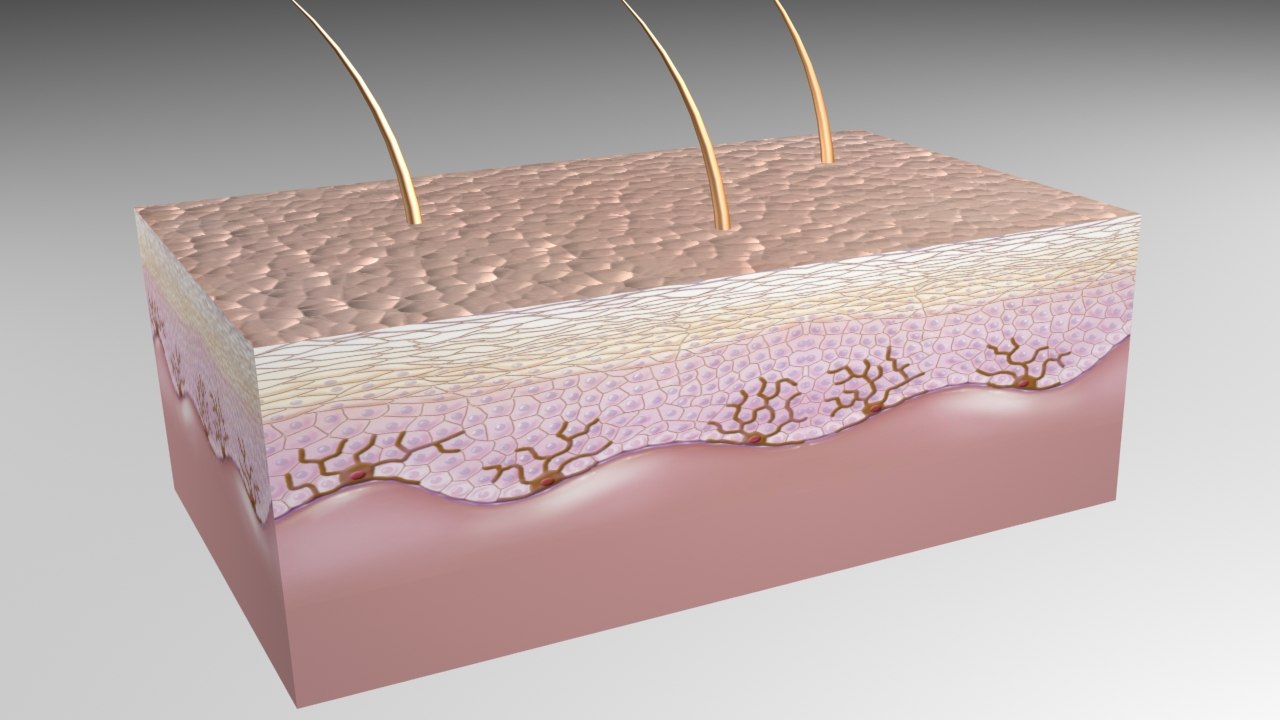
3D epidermis layers skin model TurboSquid 1222353
Javad Baqersad https://doi.org/10.1016/j.jbiomech.2021.110864 Get rights and content This paper reviews the advances made in recent years on modeling approaches and experimental techniques to characterize the mechanical properties of human skin.
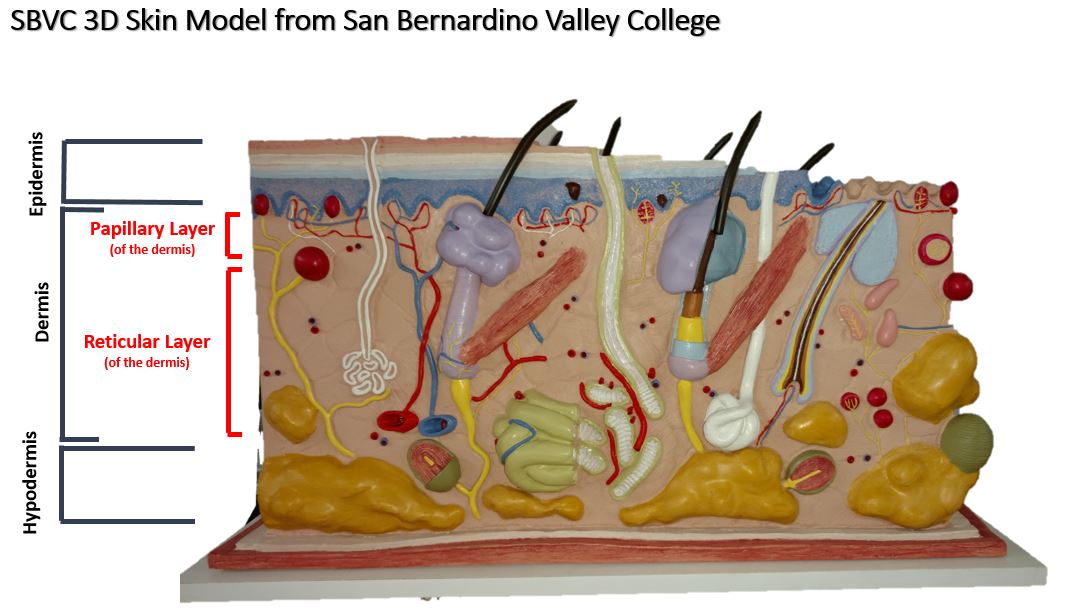
The Epidermis SCIENTIST CINDY
Official Ninja Nerd Website: https://ninjanerd.orgNinja Nerds!In this lecture Professor Zach Murphy will be teaching you about different layers of the skin i.

9 best Skin project images on Pinterest School projects, Human
Skin that has four layers of cells is referred to as "thin skin." From deep to superficial, these layers are the stratum basale, stratum spinosum, stratum granulosum, and stratum corneum. Most of the skin can be classified as thin skin. "Thick skin" is found only on the palms of the hands and the soles of the feet.

HD Skin layer Teleport Hub Live!
Magnetic resonance imaging-based visualization of skin deformation in suction experiments confirms the deformation pattern predicted by the multilayer model, showing a consistent decrease in dermal thickness for large probe opening diameters. Similar content being viewed by others
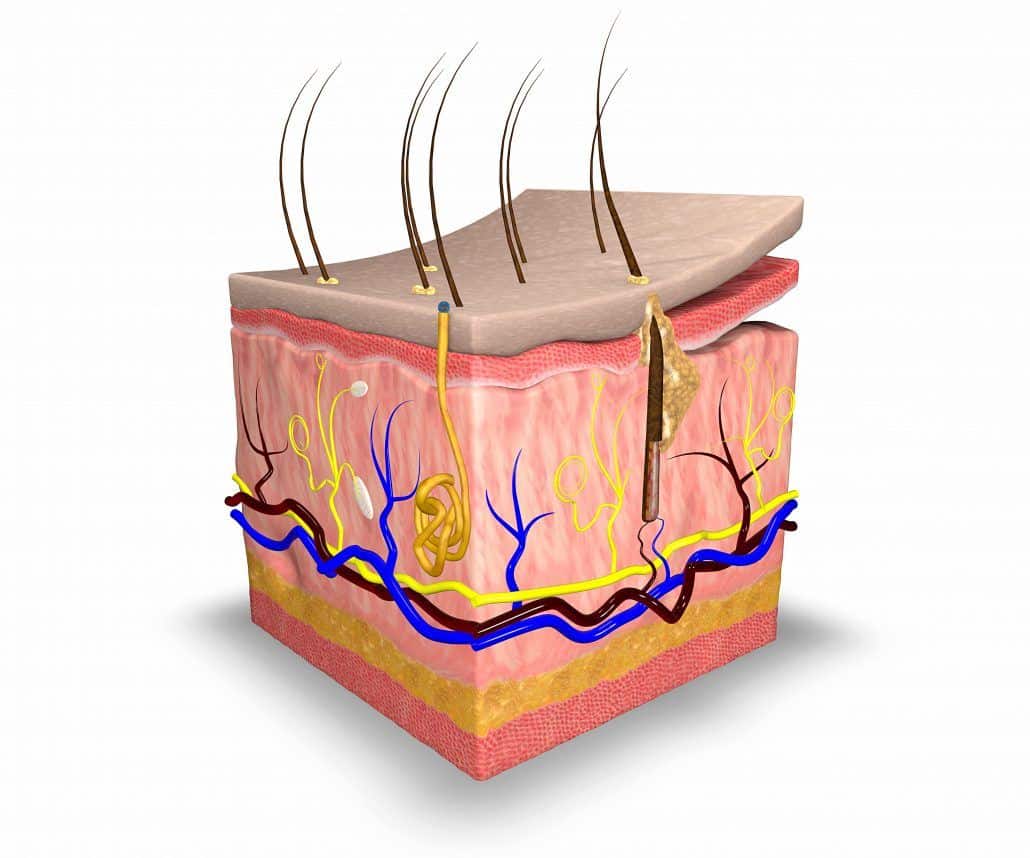
Layer by Layer Understanding Your Skin’s Structure Ask The Scientists
Epidermis Dermis Subcutaneous fat layer (hypodermis) Each layer has certain functions. Epidermis The epidermis is the thin outer layer of the skin. It consists of 2 primary types of cells: Keratinocytes. Keratinocytes comprise about 90% of the epidermis and are responsible for its structure and barrier functions. Melanocytes.

Skin Layer Model improved by Netuno Download free STL model
More commonly used models to conduct skin-permeation studies are ex vivo human or animal skin. Through the standardization of protocols and techniques, the available skin models can be useful as surrogate models for in vivo human skin to evaluate the bioequivalence of topical products.

3D Skin Model Project
Layers of the Skin. The skin is the body's largest organ. It serves many important functions, including. Protecting the body against trauma. Regulating body temperature. Maintaining water and electrolyte balance. Sensing painful and pleasant stimuli. Participating in vitamin D synthesis. The skin keeps vital chemicals and nutrients in the.
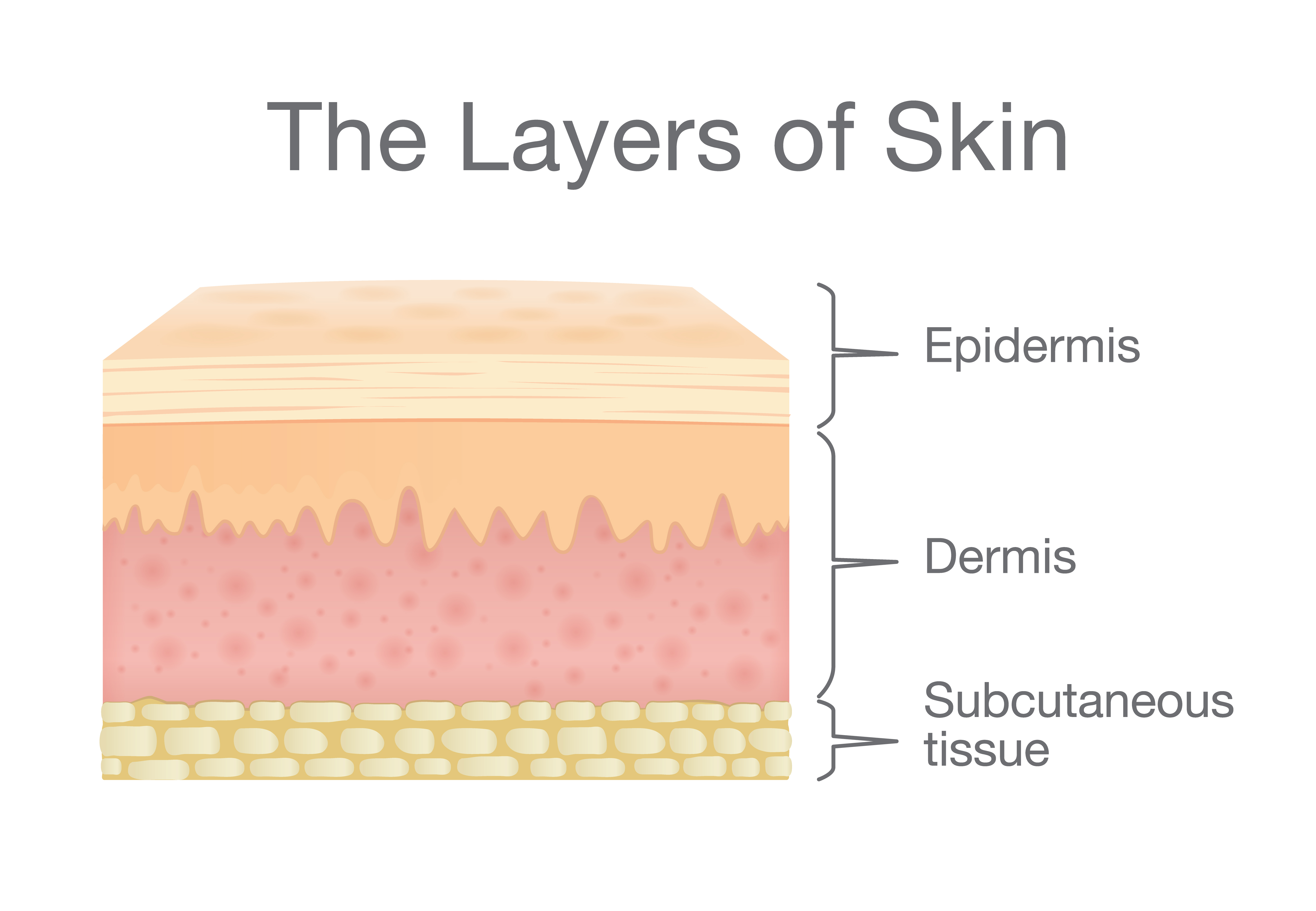
Skin Layers
The LibreTexts libraries are Powered by NICE CXone Expert and are supported by the Department of Education Open Textbook Pilot Project, the UC Davis Office of the Provost, the UC Davis Library, the California State University Affordable Learning Solutions Program, and Merlot. We also acknowledge previous National Science Foundation support under grant numbers 1246120, 1525057, and 1413739.